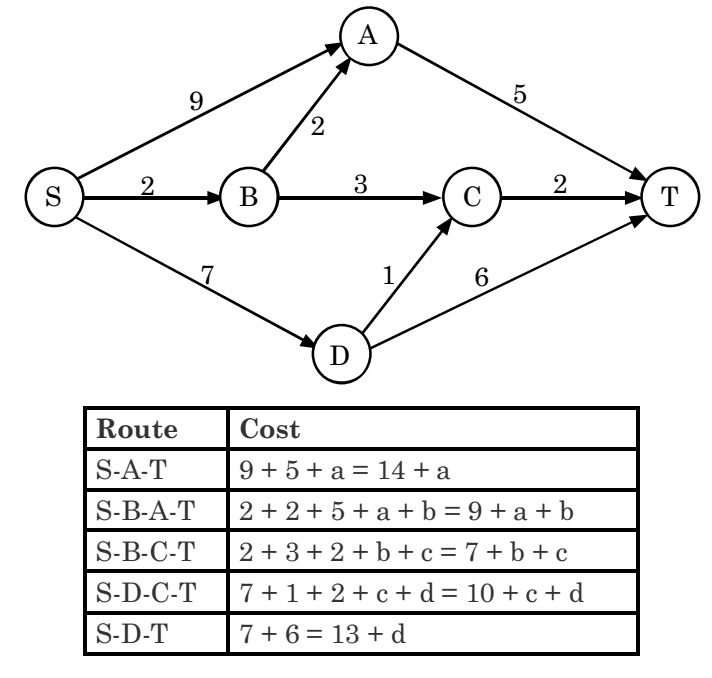Direction: A significant amount of traffic flows from point S to point T in the one-way street network shown below.
Points A, B, C and D are junctions in the network, and the arrows mark the direction of traffic flow.
The fuel cost in rupees for travelling along a street is indicated by the number adjacent to the arrow representing the street.
Motorists travelling from point S to point T would obviously take the route for which the total cost of travelling is the minimum.
If two or more routes have the same least travel cost, then motorists are indifferent between them.
Hence, the traffic gets evenly distributed among all the least cost routes The government can control the flow of traffic only by levying appropriate toll at each junction.
For example, if a motorist takes the route S - A - T (using junction A alone), then the total cost of travel would be Rs 14 (i.e. Rs 9 + Rs 5) plus the toll charged at junction A.

-
If the government wants to ensure that no traffic flows on the street from D to T, while equal amount of traffic flows through junctions A and C, then a feasible set of toll charged (in rupees) at junctions A, B, C and D respectively to achieve this goal is
-
- 1, 5, 3, 3
- 1, 4, 4, 3
- 1, 5, 4, 2
- 0, 5, 2, 3
- 0, 5, 2, 2
Correct Option: E
From the given diagram ,
Let the toll charged at junctions A, B, C and D be a, b, c and d respectively.
Then 1st we will list down all the routes and corresponding cost of travel.
Since the cost of travel including toll on routes S-A-T, S-B-C-T, S-B-A-T and S-D-C-T is the same. And D-T has no traffic due to high toll charge at D.
From the last solutions we will get b = 5, 14 + a = 7 + b + c = 12 + c, or a + 2 = c 7 + b + c = 10 + c + d = 12 + c or d = 2, hence the result is B = 5, d = 2 and c-a = 2 that is satisfied by option (E).


